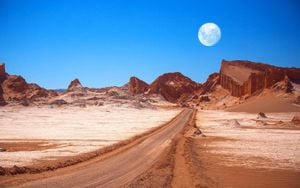The James Webb Space Telescope (JWST) has been making headlines recently, not just for its spectacular images of the cosmos, but also for the groundbreaking discoveries it has unveiled about the early universe. Astronomers and scientists across the globe are buzzing with excitement over the telescope’s revelations about massive galaxies formed shortly after the Big Bang, reshaping our comprehension of cosmic history.
Just weeks ago, researchers shared their findings from Webb’s observations of these colossal celestial structures, some of which date back approximately 13 billion years. To put this astonishing timeline in perspective, it means these galaxies began blinking to life when the universe was roughly 3% of its current age! This remarkable insight opens doors to numerous questions about how galaxies developed so quickly, challenging long-held beliefs about cosmic evolution.
Using its extraordinary ability to peer deep through space and time, the JWST has detected several of these massive galaxies, categorized as being far larger and older than anything previously observed. This new data suggests these massive entities formed at rapid rates, highlighting the dynamic and early onset of star formation events.
According to studies published by the Astrophysical Journal Letters, one of the galaxies spotted by Webb, known as CEERS-93316, is estimated to be approximately 13.4 billion years old. Its size, comparable to the Milky Way, raises pivotal questions about the efficiency of star formation during the universe’s infancy. Researchers are left pondering: how did such massive structures form so early, defying previous theories which posited slower growth rates at this developmental stage?
One of the lead researchers, Dr. Steven Finkelstein from the University of Texas at Austin, expressed astonishment at these findings. He remarked, "The galaxies we’re seeing now are far larger and more numerous than we expected, making us rethink our models of galaxy formation and evolution. Our previous theories need drastic adjustments based on the new data from Webb." These assertions indicate significant shifts underway within the astrophysical community, as scientists seek to comprehend the nature of early galaxies.
The significance of these discoveries goes beyond just scaling galaxies with impressive statistics. They provide insight on how galactic structures are interconnected and evolve over time. By unraveling this cosmic mystery, researchers hope to gain clarity on the components of the early universe following the Big Bang, including dark matter and energy.
This growing body of research aligns with findings from other telescopes, but Webb’s capabilities—thanks to its sophisticated instruments like the Near Infrared Camera (NIRCam)—allow for more precise observations. The NIRCam captures the light from distant galaxies, which takes billions of years to reach us, and interprets this data to reveal the composition and size of these early structures.
While exploring such ancient galaxies, astronomers also reflect on how early star formation influenced the surrounding environment. For example, the ionization of hydrogen gas from newborn stars triggered the transformation of the universe during its first billion years. Understanding the role of these early stars and galaxies can provide keys to recognizing the entire evolutionary path of the cosmos.
But how does Webb fit within the larger picture? This telescope is considered the most advanced astronomical project ever undertaken and is the result of international collaboration among NASA, the European Space Agency, and the Canadian Space Agency. It serves not simply as a telescope, but as a gateway to exploring lost epochs of cosmic history and playing detective with the universe's puzzles.
The excitement doesn’t end there. Scientists are eagerly anticipating additional observations where Webb will potentially detect even older galaxies, perhaps those closer to the dawn of time. If successful, it could alter our foundational understandings of the universe and its formative processes. Current models and theories stand at the brink of becoming outdated as it becomes increasingly clear just how vibrant and rapidly developing the early universe was.
Future research will aim to compare the newly discovered galaxies with known cosmic structures and eventually stitch together a more comprehensive view of the universe’s history. Such findings will undoubtedly require revisiting and refining astrophysical theories, prompting discussions and debates among thought leaders across the field.
This exploration has sparked interest not only within professional scientific circles but also among enthusiasts and aspiring astronomers who feel inspired by the wonders of space. By democratizing access to such rich data, organizations and institutions have the chance to engage communities through initiatives advocating for astronomy education and public involvement.
By bridging the gap between complex scientific insights and popular outreach, the fascinating revelations from the JWST could inspire the next generation of researchers devoted to mapping the fabric of our universe.
With the JWST powered and operational, the sky is no longer the limit. Instead, it’s just the beginning of unraveling our past, today.



